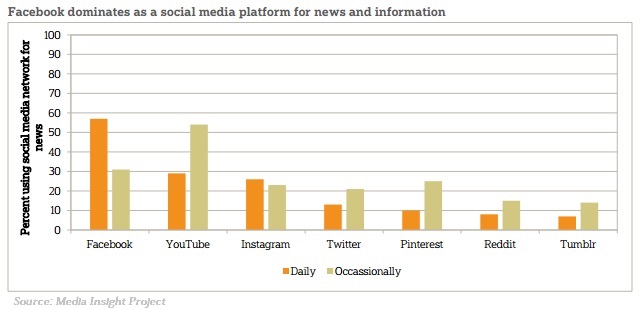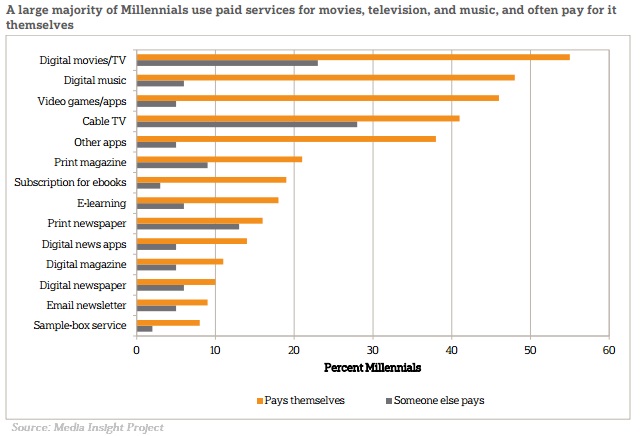
What Millennials’ News Consumption Habits Mean for Associations
A new report found that millennials are not willing to pay for news and that while they don’t actively seek news through social media, they often get their information through Facebook and YouTube anyway. How does these findings affect associations?
Though they don’t use social media primarily as a source for seeking out news and information, a majority of millennials end up getting most of the news they absorb from their social networks, according to a report released last week by the Media Insight Project. MIP, a collaboration between the American Press Institute and Associated Press-NORC Center for Public Affairs Research, also found that they’d be very unlikely to pay for news.
The smart organizations are putting their content wherever their members, prospects, and other stakeholders are likely to be
Of the 1,046 millennials around the country surveyed, 47 percent said they visit Facebook for the purpose of consuming news, but 88 percent said they get news from the social network at least occasionally. Another 83 percent said YouTube is sometimes a source of news, and 50 percent identified Instagram as an occasional source.
 Click image to enlarge
Click image to enlarge
But when it comes to paying for news, 40 percent reported paying for at least one subscription themselves. And millennials were more likely to pay for print newspapers and magazines than they were digital versions of the same product.
So, do associations, which often tout their publications as a main benefit of membership, have anything to worry about given the report’s findings? Not at all, said John T. Adams III, executive director of Association Media & Publishing.
“Millennials know that there’s a lot more to joining an association than just getting a publication,” said Adams. “They get networking opportunities, they get education opportunities, and they get the opportunity to be affiliated with a group of likeminded people, whether that’s people in the same profession, or same industry, or with the same interests.”
Still, Adams noted, the report does present an imperative for associations as far as how they are producing and sharing their content.
“The smart organizations are putting their content wherever their members, prospects, and other stakeholders are likely to be,” Adams said. “If their members are on Facebook, they should go to Facebook; if they can find members on YouTube, they may want to consider doing videos; if they can find members through Twitter and drive them, through tweets, to other sources of association content, they should do that. Associations have to adapt and be multipurpose.”
And most are, he said, by experimenting with video capabilities, diving into different social networks like Instagram and LinkedIn, and launching podcasts.
“All of these things continue to increase in popularity in the association community,” said Adams. “Associations know that millennials represent an important membership growth opportunity, and … they’re using these tools to report the news of their industries and reach that broader audience.”
(iStock/Thinkstock)







Comments